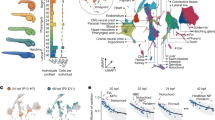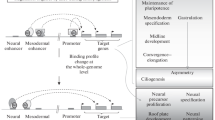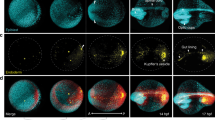Overview
- Editors:
-
-
Lilianna Solnica-Krezel
-
Dept. of Biological Sciences, Vanderbilt University, Nashville, USA
- The first book that comprehensively describes the mechanisms of early patterning and morphogenesis in zebrafish
- Summarizes the current knowledge and the key questions for the next decade of reseach
- All authors are leading experts in the field
- Includes supplementary material: sn.pub/extras
Access this book
Other ways to access
About this book
What makes an ideal model system to study embryonic development? The answer to this question has varied in the course of scientific quest, depending on the available experimental approaches. Yet, at the beginning of the new millennium, most of the mainstream model organisms have one feature in common, they are amenable to genetic analysis. Indeed, the genetic approach has proven remarkably effective in the dissection of complex biological phenomena, starting with the regulation of the lactose operon in Escherichia coli, the decision between the lysogenic and lytic cycles of the lambda phage and the yeast cell cycle control. The genetic screens for mutations affecting embryonic development of a fruit fly, Drosophila melanogaster, carried out by Christiane Niisslein-Volhard, Eric Wieschaus and Edward Lewis, marked the turning point in experimental approaches to embryonic development of more complex organisms. The resulting mutants facilitated identification of the key regulatory molecules, while their phenotypic classes hinted at the underlying regulatory mechanisms. This work not only provided a paradigm for genetic dissection of other developmental processes, but also inspired many budding embryologists throughout the world. Soon thereafter, George Streisinger noted that, among vertebrates, the zebrafish, Danio rerio, offered many features facilitating the dissection of nervous system development and function. Among these, transparency of the embryo, ease of husbandry, and the highly prolific nature make the zebrafish a good genetic model system.
Similar content being viewed by others
Article
Open access
15 November 2023
Article
Open access
17 December 2019
Table of contents (17 chapters)
-
Front Matter
Pages I-XVII
-
Germ Layer Formation and Early Patterning
-
- Takuya Sakaguchi, Toshiro Mizuno, Hiroyuki Takeda
Pages 1-14
-
- David Kimelman, Alexander F. Schier
Pages 15-27
-
- Rachel M. Warga, Didier Y. R. Stainier
Pages 28-47
-
- Masahiko Hibi, Toshio Hirano, Igor B. Dawid
Pages 48-71
-
- Matthias Hammerschmidt, Mary C. Mullins
Pages 72-95
-
- Christopher V. E. Wright, Marnie E. Halpern
Pages 96-116
-
Gastrulation Movements
-
-
- Lilianna Solnica-Krezel, Mark S. Cooper
Pages 136-165
-
-
Neural Development
-
- Steve W. Wilson, Michael Brand, Judith S. Eisen
Pages 181-215
-
- Robert N. Kelsh, David W. Raible
Pages 216-236
-
- Bruce Appel, Ajay Chitnis
Pages 237-251
-
- Christine E. Beattie, Michael Granato, John Y. Kuwada
Pages 252-269
-
Aspects of Organogenesis
-
- Caroline Brennan, Sharon L. Amacher, Peter D. Currie
Pages 271-297
-
- Deborah Yelon, Brant M. Weinstein, Mark C. Fishman
Pages 298-321
-
-
- Stephen S. Easter Jr., Jarema J. Malicki
Pages 346-370
-
Back Matter
Pages 371-438
Editors and Affiliations
-
Dept. of Biological Sciences, Vanderbilt University, Nashville, USA
Lilianna Solnica-Krezel




